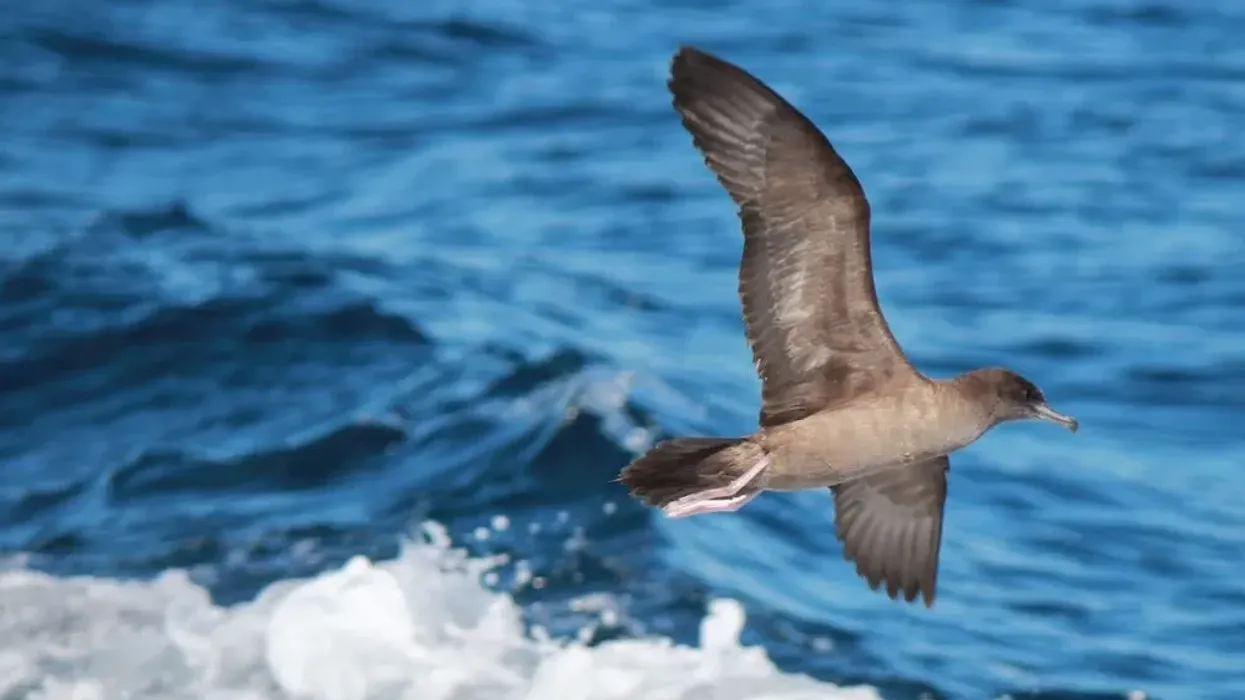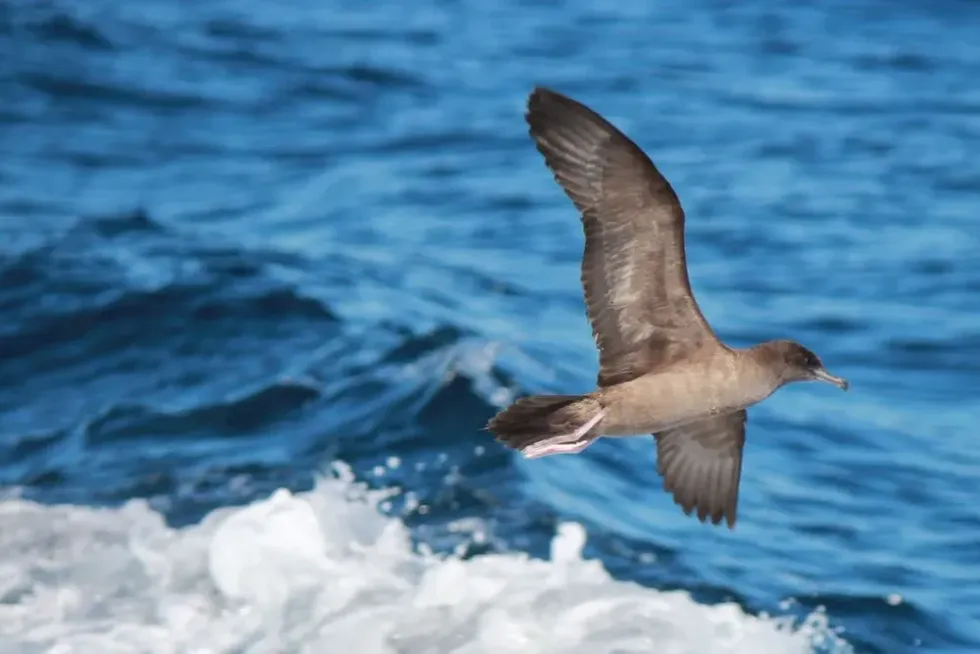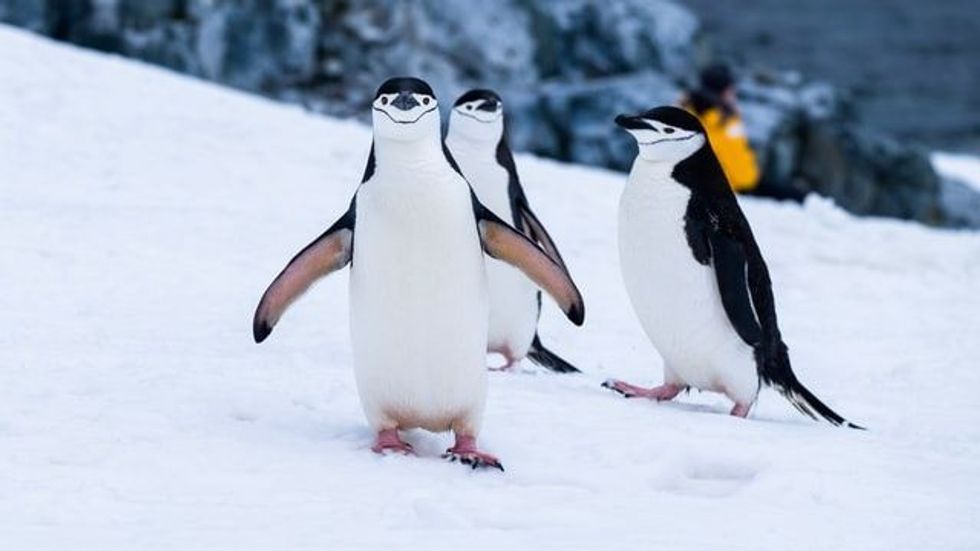Look carefully towards the ocean and you will see a bird swoop deep right into the waters, pulling a good snack out for itself. That’s the shearwater species for you!
Shearwater birds are globally distributed, soaring high above the cold blue waters. These birds would then fly close, too close to the surface of the water, with the wings almost ‘shearing’ the beautiful aqua waves, thus giving it its name. There are three different genera of shearwater, and about 30 different species fall in these three genera.
These aves are migratory, traveling long migration distances in a large colony, sometimes up to 8,700 m (14,000 km). Be careful when you go fishing because these birds will follow you with utmost stealth and determination to snatch away your catch from the fishing boat in the sea.
Other than these meetings, you would hardly search shearwater birds near the shore. Don’t threaten them, else you would receive a stream of stinky oil coming from their stomachs.
Amazed by knowing about this marine bird, the shearwater? You can read more amaze-wing articles about other birds like with these falcon facts and the eagle facts on our pages!
Shearwater Interesting Facts
What type of animal is a shearwater?
A shearwater is a type of bird.
What class of animal does a shearwater belong to?
A shearwater belongs to the class of birds.
How many shearwaters are there in the world?
There are three different genera under the shearwaters, and a total of 30 species come under this, such as the short-tailed shearwater. However, the total population of this migratory species is unknown.
Where does a shearwater live?
You can find shearwater birds living usually near the North Atlantic ocean.
What is a shearwater's habitat?
Common areas to spot them are near temperate or cold waters. They rarely are found in regions having subtropical to tropical waters. However, this species is entirely pelagic at all times except the mating season. They prefer a habitat around coastal hills or islands, making their nests in burrows.
Who do shearwaters live with?
You can mostly see these seabirds live in a large group called colony, probably in a faraway island.
How long does a shearwater live?
It is quite common for the shearwater species to live up to 15 years. However, the oldest known wild bird ever recorded is a Manx shearwater bird on Copeland Island, which was 55 years old back in the year 2003.
How do they reproduce?
During the mating season, shearwater birds come down to the islands and coastal regions on the breeding site. Breeding often happens in colonies. The breeding rituals include calling each other with varied calls.
After the courtship, this pair roosts together. These birds prefer New Moon or any moonless night for breeding. They make their nests in burrows or in crevices of large rocks.
The couple has a single egg in every breeding. If this egg happens to get lost in the crevices of their habitat, the pair would mostly wait until the next mating season to breed.
Both the parents support each other and take upon the incubation duties and even rear the little one together. Incubation goes on for about 6-8 weeks. In the early days of these chicks, the parent birds begin feeding them with oil from their stomachs.
This oil comes from the crustaceans of the parents' diet. As they grow slowly, the chicks then move on to feeding on partially eaten food. Once these chicks are between 3-4.5 months old, they begin fledging.
What is their conservation status?
IUCN Red List of Threatened Species marks the conservation statuses of 14 shearwater species as Least Concern, five species as Near Threatened, four species as Vulnerable, four species as Critically Endangered and two species as Endangered. Two species have already become extinct, while the conservation ranks of two other species is not evaluated.
Shearwater Fun Facts
What do shearwaters look like?
Neither too large nor too small. Shearwaters are common seabirds of medium anatomy. These birds have tubular nostrils. They have long, stiff wings which help them fly very close to the waves.
Their bodies are usually dull colors, either shades of grey, black, or brown upperparts. The underparts of these birds are tinted white. Their legs are short, complemented with webbed pink feet. They have large beaks too, which helps them in plucking fish from the sea or oceans.
How cute are they?
We do not find the shearwater much cute.
How do they communicate?
A common call of these birds is an ‘aa-o’ call. The aves of this species are said to have poor vision in the dark hours.
Thus, these birds find each other with such sounds. Usually, when a member leaves or arrives in the colony, they let the others know with such songs. They also have a special call when they are in the air, which is like a series of 2-6 braying noises.
How big is a shearwater?
These water birds have their bodies measuring about 15-25 in (38-63.5 cm) in length. They also have a very wide wingspan, extending up to 2-2.5 ft (61-76 cm) between the tips.
The shearwater is almost 3-4 times the size of an American tree sparrow.
How fast can a shearwater move?
Different species under these shearwaters gain different speeds. The Manx shearwater is said to be capable of flying at speeds of about 34.2 mph (55 kph)!
How much does a shearwater weigh?
While the Manx shearwater weighs about 12.4 -15.9 oz (350-450 g), the great shearwater has more body weight, weighing between the ranges of 25.2-33.5 oz (715-950 g). Different birds of this species have varying weights, which are broadly between the range of 12.345-33.51 oz (350-950 g).
Generally, birds falling under the Calonectris and Ardenna genera are comparatively bigger, and the smaller ones are found in the genera Puffinus.
What are the male and female names of the species?
There are no exclusive names for the female and male birds of the shearwater.
What would you call a baby shearwater?
The younger ones of birds are called chicks, nestlings, or hatchlings.
What do they eat?
Marine animals, mainly crustaceans, fish, mollusks, squid, and even plankton constitute the main diet of these seabirds. They are intelligent creatures, following the path of fishing vessels for fish scraps as well as whales, who scare away the fish shoals up to the surface.
They can feed themselves while floating over the surface of the water. Another special talent is that these birds can ‘fly’ under the water surface with their wings half-opened, in search of food.
Are they poisonous?
No, the shearwater species is not poisonous.
Would they make a good pet?
We do not think these birds would make good pets as they require to be by the oceans at almost all times of the year.
Did you know...
As mentioned earlier, shearwater falls under three different genera: the Calonectris, the Puffinus, as well as Ardenna.
The longest migration recorded electronically by any animal was done by the sooty shearwaters, who have been studied to cover about 40,000 m (64,000 km) every year!
In the year 1961, there were many reports of sooty shearwater birds flying randomly into objects. The sooty shearwater aves were also seen regurgitating fishes like anchovies. This incident ignited enthusiasm in a local California resident, Alfred Hitchcock.
He had also come across another story by Daphne du Maurier, a British writer, who spoke about spooky, unpredictable bird behavior. These incidents became the foundation for the 1963 thriller movie, ‘The Birds’, by Alfred Hitchcock. This movie was related to the theory of nature going against humanity.
It was later found out that shearwater health was being affected by the presence of toxin-generating algae. This alga was prevailing in about 79% of the total plankton constituted under their diet.
The Ardenna tenuirostrisis said to perform migratory loops in ‘figure of eights’.
The genus name Ardenna, which houses birds like the Sooty Shearwater, referred to as a 'seabird' by Ulisse Aldrovandi, an Italian naturalist.
Shearwaters are also known as ‘muttonbirds’. Early Europeans killed this bird for its meat as part of its meals. They said that the flesh tasted similar to that of mutton.
The eggs of these birds are subject to predation mostly by feral cats.
The shape of their feet makes them unable to walk on land.
With many species of shearwater being threatened, many conservation measures are being taken to save their population.
How deep can a shearwater dive?
These seabirds are excellent divers. One common behavior is that they can go diving to depths of up to 230 ft (70 m) and pull out marine creatures like squid and fishes from the water.
Why do shearwaters migrate?
Stiff-winged shearwaters fly far and wide around the sea under migration in April and May. They are known to migrate to ranges across New Zealand, Antarctica, Japan, South American, and even Siberia.
Adult shearwaters travel southwards around the sea during the month of October to their breeding range.
In the month of April, these adults leave their breeding grounds and travel northwards, usually along the western Atlantic side. The non-breeding bird stays back in the common colony grounds with its family in North Atlantic regions usually until the month of November.
Learn more about some other birds on our pages such as kestrel bird fascinating facts and hawk amazing facts.
You can even occupy yourself at home by coloring on one of our free printable shearwater coloring pages.









